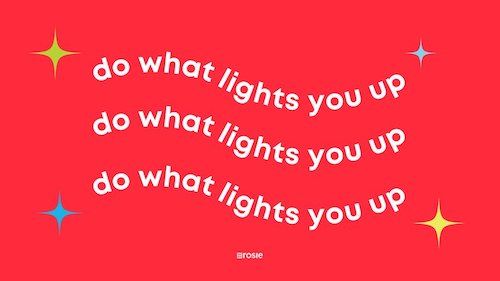What Does Diversity Look Like in the Workplace?

By Jibril Yassin
In the past, we’ve talked about building inclusive workplaces, where staff can feel safe, supported, and valued. Diversity and inclusion go hand-in-hand with creating a Conscious Culture – in theory, diversity should reflect the communities workplace culture serve.
It’s only been in recent years that employers are starting to realize the tangible benefits of taking diversity and inclusion initiatives seriously. Below, we’ll look into what that means and detail what workplace culture looks like for workers and organizations when D&I strategies are introduced and supported.
What are the different types of diversity found in the workplace?
A key study by the Harvard Business Review revealed what we traditionally think of diversity can be classified into two key categories: inherent and acquired. It is these two diversity types and how they intersect that can be seen in the workplace; both deal with factors that make up who people are at an individual level.
Inherent diversity includes factors that play a part in how individuals were born and raised, including race, gender, and sexual orientation but not limited to, socioeconomic background, disabilities (physical, sensory, learning, mental health), and cognitive processes.
Acquired diversity consists of skill sets and insights gleaned from experience that inform personal worldviews. These are characteristics a person has the means to change over time and include anything from job know-how to language fluency, cross-functional knowledge, or cultural perspectives.
How does work culture fail to address diversity?
You may remember in 2014 when every big tech company began disclosing their diversity reports and confirmed what we all knew: their company workforces were incredibly lacking in non-white voices and perspectives. ‘No more,’ those companies swore. ‘It's time to be innovative at diversifying the workforce.’
But what might surprise you is that in the eight years that have passed, Google, Facebook, Microsoft, and Apple have moved into new territories and products, even flirting with the idea of virtual worlds like the Metaverse but have struggled to make similar progressive gains on the diversity front.
Work culture fundamentally changed for many starting in 2020 and in the wake of becoming remote-ready and Zoom-acquainted, needs and considerations were put aside in the name of crisis management. Workers are facing immense challenges related to work/life balance, health and safety, isolation, and a digital divide that can further exploit and widen those existing gaps.
Having to “keep it together” while the world is falling apart is not for the faint of heart. These systemic issues, when left unchecked, lead to further strain on marginalized staff, which can lead to high staff turnover, an issue that Google is all too familiar with.
In 2018, the tech giant revealed their black and Latinx employees were leaving at a much higher rate than their white staffers, a snapshot of a company struggling with hiring retention but also indicative of the culture-at-large. Many organizations can attract diverse staff but if the culture is an apprehensive and homogenous one, the staff will move to find better elsewhere.
An important relationship to consider is between the diversity found in workplace management and the success they yield in business. Studies show that representation begins to sharply decrease the higher you go looking at management and executive roles. For visible minorities, it can feel incredibly disheartening to feel underrepresented at work. What does a viable career path look like if no one who looks like you has progressed to the top?
So what does work culture look like when diversity is prioritized?
While we’ve discussed the downfalls of waiting for organizations when diversity and inclusivity initiatives get ignored. But what exactly does the flipside actually look like? Incredibly successful, it turns out.
Remember when we talked about diversity types? The Harvard Business Review reports companies that feature "2D" diversity (that is, having leaders that exhibit at least three inherent and three acquired diversity traits) are found to be more successful and innovative, not to mention capable of developing engaging and relevant policies and practices. The numbers don’t lie: these companies were found 45 percent more likely to grow in market share on an annual basis, and 70 percent to expand into new markets.
When organizations bring on a selection of voices that are more in-line with the audiences these organizations serve, the entire business better understands the audience and their needs. Those same companies are thus more liable to discover new opportunities in new markets thanks to their diverse foresight.
A workforce can innovate and encourage a generous exchange of ideas when a diverse group of individuals, with both forms of diversity, interact. But that innovation starts by fostering an environment where diversity can be encouraged, and employees can use their experiences and perspectives to bring different ideas to build upon.
So how can we achieve that?
Nurturing diversity in your organization is not something that can be done with a series of easy fixes. It, above all, requires a top-down approach starting at the leadership levels to ensure nothing gets lost in translation.
One potential strategy for success can be in creating an internal mobility strategy. Encouraging and establishing internal mobility can be a boon for nurturing a diverse workforce with a wide range of experiences, not to mention it always saves to nurture talent and drive found right on your doorstep.
Another approach involves moving away from a culture where the loudest voices are the most influential, and prioritizing different communication methods like Writing > Talking and asynchronous work. A culture where everyone is encouraged to bring their best foot forward is great for everyone; leaders who are able to encourage equal speaking time across the board are twice as likely to glean insight that’s inherently diverse thanks to its contributors.
We’re no stranger to bias. Many companies have incorporated unconscious bias training, which offers people a way to react differently when presented with these biases and learn to become comfortable with recognizing them. However the real change comes in examining the systems set in place that encourage and reinforce these organizational biases. Thinking about the types of diversity we mentioned earlier and emphasizing those in training can be vital in how employees examine their own overlapping social identities and experiences.
Ask yourself what the current process is around talent management and how bias plays a role. What key values and traits are prioritized in workplace culture that may go unnoticed by management? Reinforcement is key and continuing to check all biases that impact your workplace environments go a long way towards making them more welcoming for different groups.
Looking for more ways on how to better improve diversity in the workplace? Below are some quick tips that can get the ball spinning:
- Avoid diversity quotas. They’re only quick fixes and do nothing to remove barriers preventing underrepresented voices to rise up the corporate ladder. Plus, they’re corny.
- Reframe your job descriptions. The language should be based on what applicants should be able to accomplish within a given timeframe and not their qualifications.
- Make it so everyone has equal access to technology for remote work. This is especially important in our current times.
- Perfect the art of the check-in – it can build trust and later open the floodgates for dialogue to flow between staff.
- Set clear goals to keep values consistent and on-point.
- Open up that holiday calendar and recognize every holiday that represents the religious or cultural beliefs found at your company.
- Stay on the course: there is no single approach, no easy fix that can be committed to that will yield incredible results within a fiscal year.
The data doesn’t lie. Diversity works. But it’s not something that can run on autopilot, nor can it be implemented when it ignores the progress demanded by inclusion. When diversity and inclusion initiatives work, everyone feels engaged and more importantly, included.
Jibril is a writer based in Toronto, Canada. A big fan of tech, culture, and long walks on the beach.




